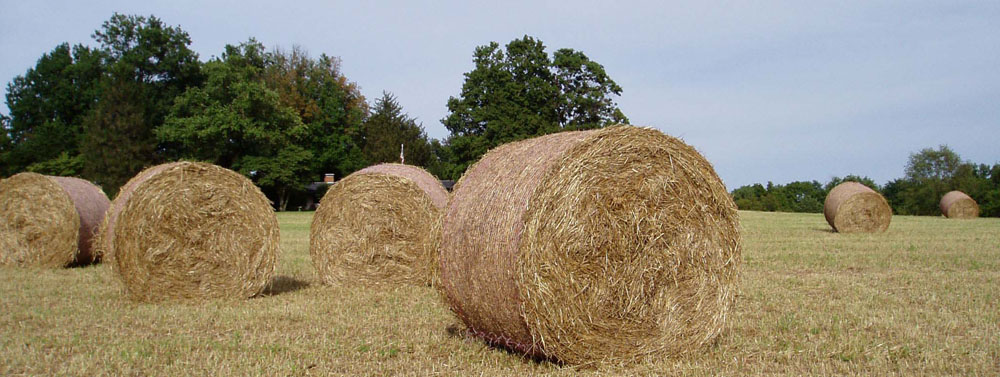US Producer Age Differs by Farm Enterprise
The USDA, 2022 Census of Agriculture, Volume 1, Table 75, provides farm data on what is produced by all farms, but it also provides census data by area of farm specialization. These are identified by NAICS (North American Industry Classification System) code. These codes allow examination of producer age by area of specialization. It is clear that some farm types have younger producers, some are fairly evenly distributed between age categories, and others are dominated by elder farmers. In the associated chart, only selected farm specializations have been selected.
- Farms represented by more than one third of producers that are younger than 45 years of age include hemp, hogs, and dairy farms.
- Farms represented by a fairly even distribution of all ages, 30 percent to 4o percent for all three ages, including vegetable farms and cattle feedlots.
- Farms represented by more than one third of producers over the age of 65 years of age include grain farms, beef farms and ranches, and fruit and nut tree farms.
This is compelling information.
One counter intuitive component is that the production of hemp, hogs, and dairy products is capital intensive. Capital can be a barrier to entry for young producers into farming. But for these three farm types, high capital requirements are not prohibiting young producers from entering.
More likely, is a barrier to remaining active as an elder producer, over the age of 65 years. Farms where elder producers have a significant role, grain, beef grazing, and nut tree farms, are less prohibiting in farm participation of elder producers.
Of course, these are broad generalizations. Hemp production is too new to have elder producers start young and retire doing what they know best. Size plays a more recent role in both hogs and dairy farm scale. With each Census of Agriculture – every 5 years – there are fewer successful smaller hog and dairy farms relative to the success of much larger farms. There are still brilliantly operated small hog and dairy farms, but fewer hogs and milk cows fit into smaller farms.
There is not much compelling about the middle age group, 45 to 64 years. They account for a very stable 40 percent in each farm enterprise. These are the producers in the prime of their career. It is reassuring that this category is stable in every case.
The NAICS codes sound intimidating, but they are not difficult to understand. These codes are important in accounting for who is doing what in the national accounts framework of the US economy. The more digits visible in the number, say 6 characters, the more specialized. The fewer the characters, the more generalized the category. Cattle farms have a NAICS number of 1121. Beef cattle farms have an NAICS code of 11211 and dairy farms are 11212. Within beef cattle farms, feedlots have a NAICS code of 112112, and cattle ranches are 112111.
While the producer age data presented here recently is less definitive than one would hope, it does indicate that there is no commercial farm aging crisis.
- Hemp Producers are Bucking the Aging Farmer Trend, illustrated that by state, producer age is fairly constant. There was little difference between the 10 oldest producer states and the 10 youngest producer states. But hemp producer age data that came with the dataset is one of the youngest farm sectors in 2022.
- US Farmer Age is Inversely Related to Value of Production, showed that farms producing more than $100,000 value of production accounted for 22 percent of US producers and had an average age of 56 years. The oldest 26 percent of producers produced less than $1,000 in value in 2022 and had an average age of over 60 years in age. Though not in the chart, the younger 22 percent of producers produced 96 percent of 2022 value of production.
- US Farm Producer Age Category by Value of Production – Part II, went a little deeper into three age categories: under 45 years, 45 to 64 years, and producers over 65 years in age. The farms that produced over $100,000 in value of production had two thirds of producers under age 65 and only one third of producer over 65 years of age.
- Today, US Producer Age Differs by Farm Enterprise, shows that young producers are finding ways into high capital farming, while less rigorous farm enterprises provide a safe haven for elder producers (over 65 years) to continue finding value in their senior years.
US farm producers, that provide the bounty of US agriculture, are not aging into a potential crisis for US consumers. But elder producers, over 65 years of age, can find farm enterprises that allow them to continue to actively participate in their senior years. Rather than a crisis, the robust tapestry that is US production agriculture provides safe haven for older farmers for as long as they can participate.



Comments
US Producer Age Differs by Farm Enterprise — No Comments
HTML tags allowed in your comment: <a href="" title=""> <abbr title=""> <acronym title=""> <b> <blockquote cite=""> <cite> <code> <del datetime=""> <em> <i> <q cite=""> <s> <strike> <strong>